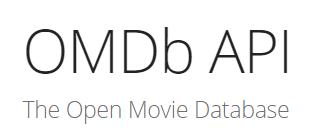Mock sample for your project: BBC iPlayer Business Layer API
Integrate with "BBC iPlayer Business Layer API" from bbci.co.uk in no time with Mockoon's ready to use mock sample

BBC iPlayer Business Layer
Version: 1.0
Start working with "BBC iPlayer Business Layer API" right away by using this ready-to-use mock sample. API mocking can greatly speed up your application development by removing all the tedious tasks or issues: API key provisioning, account creation, unplanned downtime, etc.
It also helps reduce your dependency on third-party APIs and improves your integration tests' quality and reliability by accounting for random failures, slow response time, etc.
Description
The definitive iPlayer API.
Other APIs in the same category
Cloud Data Fusion API
Cloud Data Fusion is a fully-managed, cloud native, enterprise data integration service for quickly building and managing data pipelines. It provides a graphical interface to increase time efficiency and reduce complexity, and allows business users, developers, and data scientists to easily and reliably build scalable data integration solutions to cleanse, prepare, blend, transfer and transform data without having to wrestle with infrastructure.

Entertainment Express API
Your Gateway to Building Incredible Movie, TV, and Game Content Discovery Experiences.
MetaPub
prss.org
MetaPub collects, normalizes and distributes publicly available program, episode, and piece metadata through the public radio system. Backed by ContentDepot and its data model, MetaPub allows producers to supply metadata through various methods:
MetaPub Agents that collect producer metadata by "crawling" existing public feeds (e.g. C24, BBC) or the producer's production system (e.g. ATC, ME, TED Radio Hour).
Manually enter metadata in the ContentDepot Portal on each program and episode.
Publish/push the metadata to the MetaPub upload API and execute an ingest job.
MetaPub then distributes this data to stations through an electronic program guide (EPG model)
for display on various listener devices such as smart phones, tablets, web streams, HD radios, RDBS enabled FM radios, and more. The EPG format is based on the RadioDNS specifications.
RadioDNS and MetaPub
The RadioDNS Service and Programme Information Specification (TS 102 818 v3.1.1) defines three primary documents: Service Information, Program Information, and Group Information. These documents, along with the core RadioDNS Hybrid Lookup for Radio Services Specification (TS 103 270 v1.2.1) define a system where an end listener device can dynamically discover program metadata and fetch the metadata via Internet Protocol (IP) requests. MetaPub's use of RadioDNS differs slightly in that MetaPub (a.k.a PRSS) acts as the "service provider" while the stations and related middleware act as the end devices. While this is not the primary use case of RadioDNS, the flexibility in the specification, service definitions, and DNS resolution allows this model to be easily represented.
This documentation gives a high level overview of how the RadioDNS specifications will be used by MetaPub, however it is strongly recommended that the related RadioDNS specifications be read for implementation details, definitions, and required XML schemas.
ContentDepot Drive
ContentDepot Drive (CD Drive) provides a private, per customer file storage solution similar to other cloud storage solutions such as Google Drive, Box, and Dropbox. The CD Drive is used to stage content uploads such as metadata files, images, or segment audio before associating the content with specific programs or episodes.
CD Drive content can be referenced using a URI by some operations such as synchronizing metadata. There are two possible CD Drive URI formats supported: ID and hierarchical path. The ID reference takes the form . More information about URIs can be found at Wikipedia.
Authentication
The API currently uses OAuth 2.0. Some operations require specific scopes to limit clients while the ContentDepot backend may also enforce existing user specific permissions.
MetaPub Agents that collect producer metadata by "crawling" existing public feeds (e.g. C24, BBC) or the producer's production system (e.g. ATC, ME, TED Radio Hour).
Manually enter metadata in the ContentDepot Portal on each program and episode.
Publish/push the metadata to the MetaPub upload API and execute an ingest job.
MetaPub then distributes this data to stations through an electronic program guide (EPG model)
for display on various listener devices such as smart phones, tablets, web streams, HD radios, RDBS enabled FM radios, and more. The EPG format is based on the RadioDNS specifications.
RadioDNS and MetaPub
The RadioDNS Service and Programme Information Specification (TS 102 818 v3.1.1) defines three primary documents: Service Information, Program Information, and Group Information. These documents, along with the core RadioDNS Hybrid Lookup for Radio Services Specification (TS 103 270 v1.2.1) define a system where an end listener device can dynamically discover program metadata and fetch the metadata via Internet Protocol (IP) requests. MetaPub's use of RadioDNS differs slightly in that MetaPub (a.k.a PRSS) acts as the "service provider" while the stations and related middleware act as the end devices. While this is not the primary use case of RadioDNS, the flexibility in the specification, service definitions, and DNS resolution allows this model to be easily represented.
This documentation gives a high level overview of how the RadioDNS specifications will be used by MetaPub, however it is strongly recommended that the related RadioDNS specifications be read for implementation details, definitions, and required XML schemas.
ContentDepot Drive
ContentDepot Drive (CD Drive) provides a private, per customer file storage solution similar to other cloud storage solutions such as Google Drive, Box, and Dropbox. The CD Drive is used to stage content uploads such as metadata files, images, or segment audio before associating the content with specific programs or episodes.
CD Drive content can be referenced using a URI by some operations such as synchronizing metadata. There are two possible CD Drive URI formats supported: ID and hierarchical path. The ID reference takes the form . More information about URIs can be found at Wikipedia.
Authentication
The API currently uses OAuth 2.0. Some operations require specific scopes to limit clients while the ContentDepot backend may also enforce existing user specific permissions.

OMDb
The Open Movie Database. The OMDb API is a free web service to obtain movie information, all content and images on the site are contributed and maintained by our users.
My Business Verifications API
The My Business Verifications API provides an interface for taking verifications related actions for locations.
My Business Business Calls API
The My Business Business Calls API manages business calls information of a location on Google and collect insights like the number of missed calls to their location. Additional information about Business calls can be found at https://support.google.com/business/answer/9688285?p=callhistory. If the Google Business Profile links to a Google Ads account and call history is turned on, calls that last longer than a specific time, and that can be attributed to an ad interaction, will show in the linked Google Ads account under the "Calls from Ads" conversion. If smart bidding and call conversions are used in the optimization strategy, there could be a change in ad spend. Learn more about smart bidding. To view and perform actions on a location's calls, you need to be a OWNER, COOWNER or MANAGER of the location.

TheTVDB API v3
thetvdb.com
API v3 targets v2 functionality with a few minor additions. The API is accessible via https://api.thetvdb.com and provides the following REST endpoints in JSON format.
How to use this API documentation
You may browse the API routes without authentication, but if you wish to send requests to the API and see response data, then you must authenticate.
Obtain a JWT token by POSTing to the /login route in the Authentication section with your API key and credentials.
Paste the JWT token from the response into the "JWT Token" field at the top of the page and click the 'Add Token' button.
You will now be able to use the remaining routes to send requests to the API and get a response.
Language Selection
Language selection is done via the Accept-Language header. At the moment, you may only pass one language abbreviation in the header at a time. Valid language abbreviations can be found at the /languages route..
Authentication
Authentication to use the API is similar to the How-to section above. Users must POST to the /login route with their API key and credentials in the following format in order to obtain a JWT token.
{"apikey":"APIKEY","username":"USERNAME","userkey":"USERKEY"}
Note that the username and key are ONLY required for the /user routes. The user's key is labled Account Identifier in the account section of the main site.
The token is then used in all subsequent requests by providing it in the Authorization header. The header will look like: Authorization: Bearer . Currently, the token expires after 24 hours. You can GET the /refresh_token route to extend that expiration date.
Versioning
You may request a different version of the API by including an Accept header in your request with the following format: Accept:application/vnd.thetvdb.v$VERSION. This documentation automatically uses the version seen at the top and bottom of the page.
How to use this API documentation
You may browse the API routes without authentication, but if you wish to send requests to the API and see response data, then you must authenticate.
Obtain a JWT token by POSTing to the /login route in the Authentication section with your API key and credentials.
Paste the JWT token from the response into the "JWT Token" field at the top of the page and click the 'Add Token' button.
You will now be able to use the remaining routes to send requests to the API and get a response.
Language Selection
Language selection is done via the Accept-Language header. At the moment, you may only pass one language abbreviation in the header at a time. Valid language abbreviations can be found at the /languages route..
Authentication
Authentication to use the API is similar to the How-to section above. Users must POST to the /login route with their API key and credentials in the following format in order to obtain a JWT token.
{"apikey":"APIKEY","username":"USERNAME","userkey":"USERKEY"}
Note that the username and key are ONLY required for the /user routes. The user's key is labled Account Identifier in the account section of the main site.
The token is then used in all subsequent requests by providing it in the Authorization header. The header will look like: Authorization: Bearer . Currently, the token expires after 24 hours. You can GET the /refresh_token route to extend that expiration date.
Versioning
You may request a different version of the API by including an Accept header in your request with the following format: Accept:application/vnd.thetvdb.v$VERSION. This documentation automatically uses the version seen at the top and bottom of the page.

